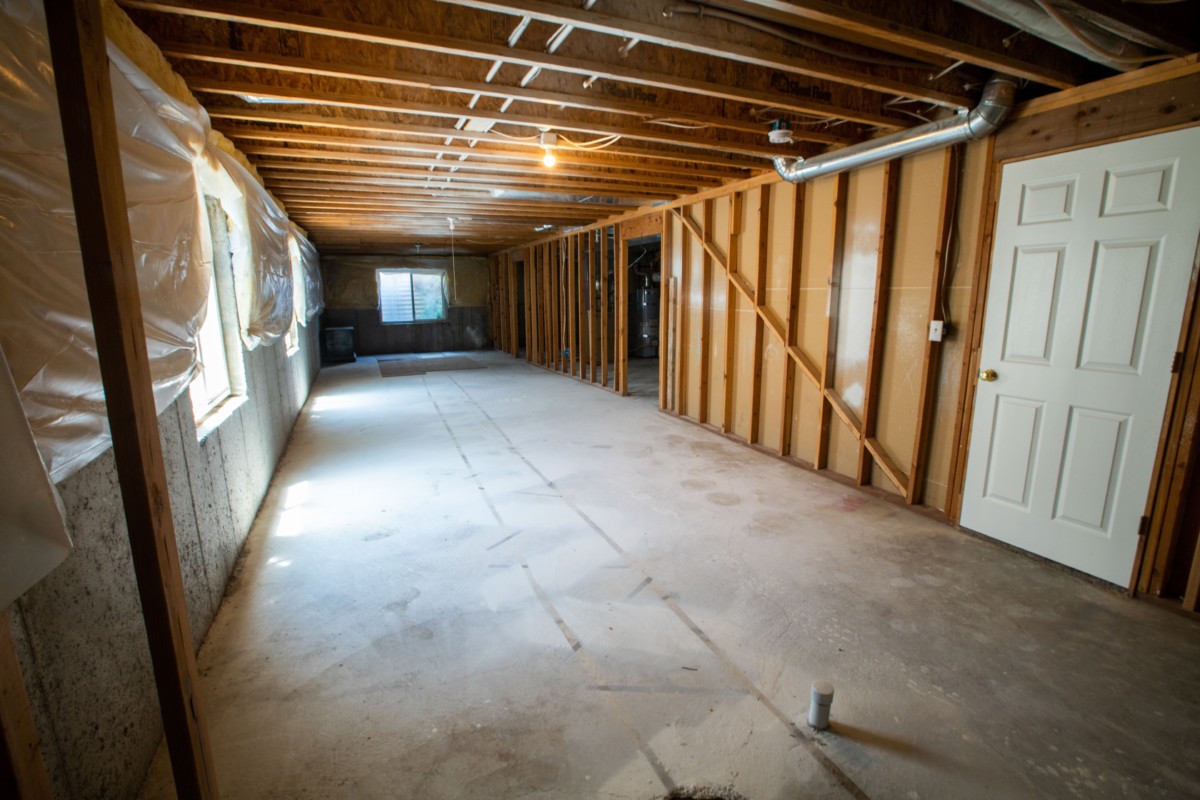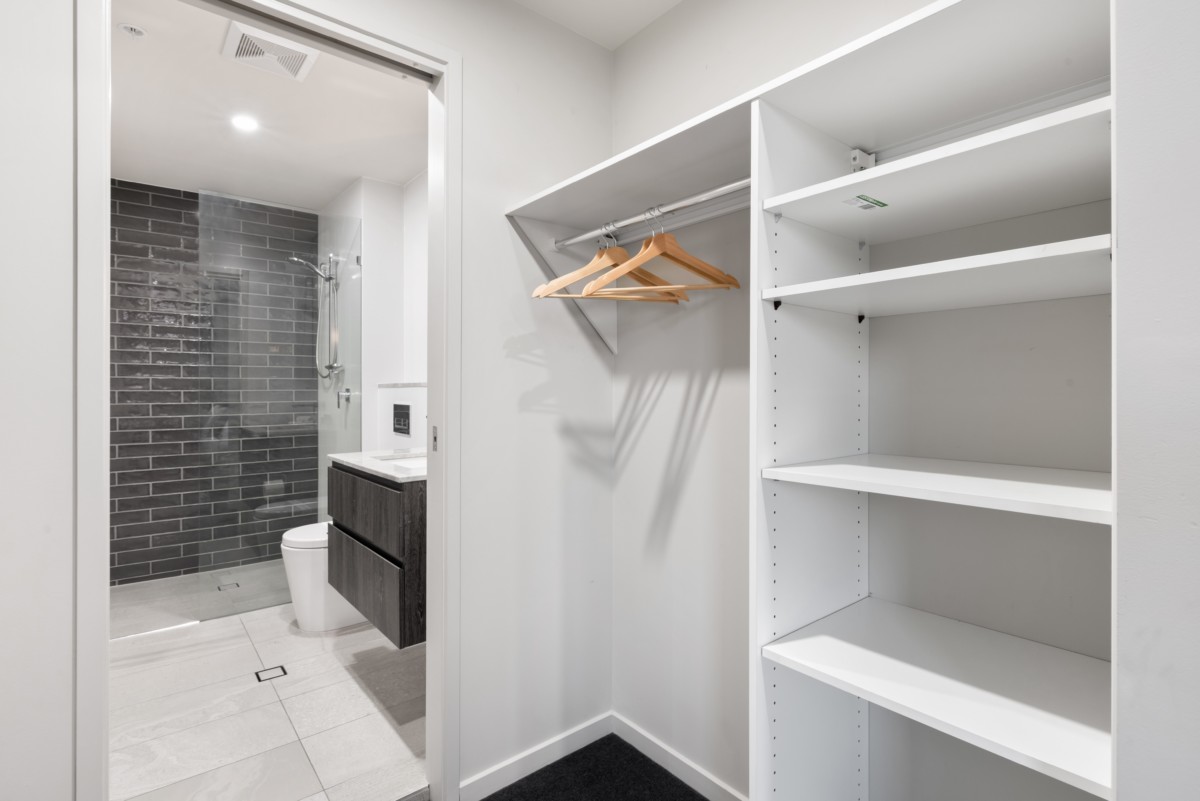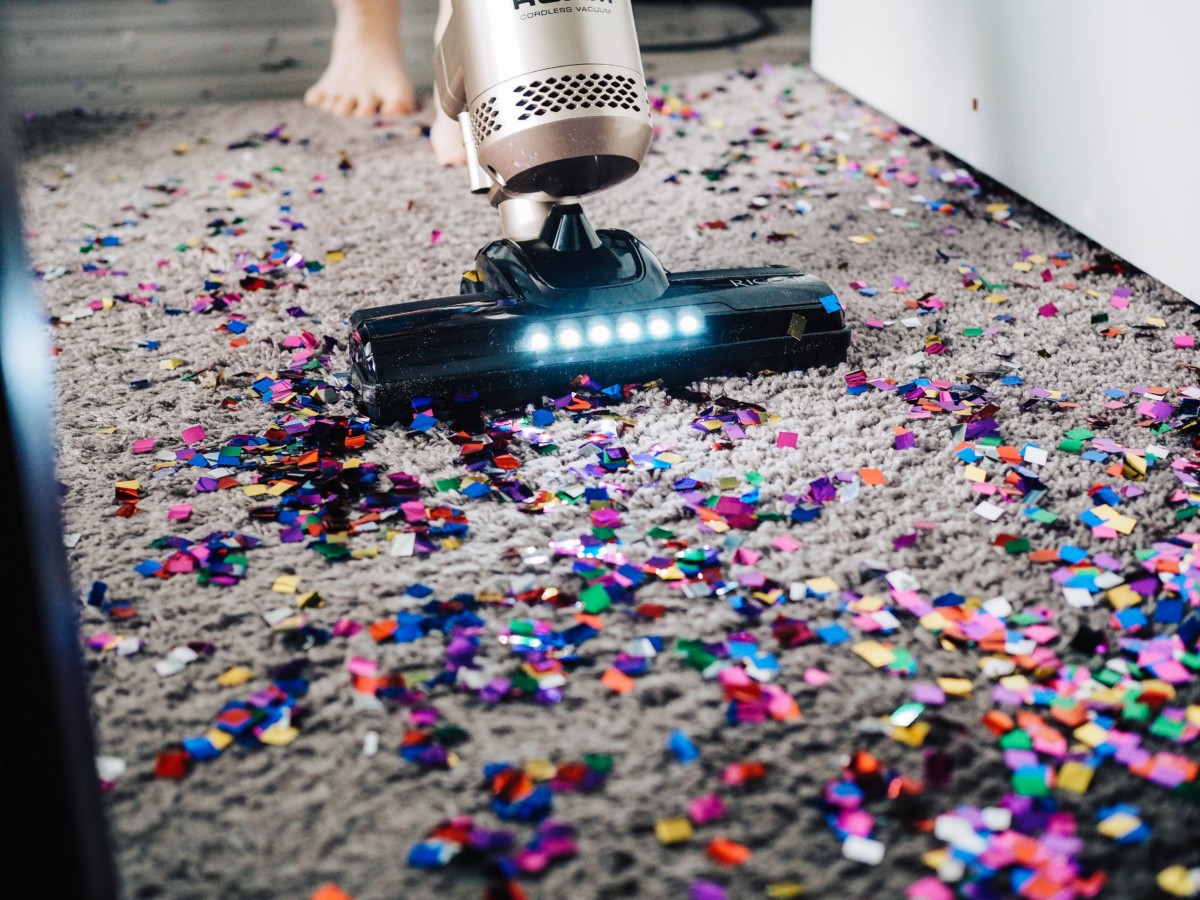A basement can be a great extra space in a home – for storage, a playroom, a home gym, or more. However, it can quickly become musty and cluttered if you don’t properly clean and maintain it. It can also be a breeding ground for mold, mildew, and dust mites, especially if you own a home in Austin, TX or Tampa, FL where there is a lot of humidity. If you’re not vigilant about keeping your basement clean, it can quickly become an unhealthy place to be.
To help you achieve your cleaning goals, we asked experts for their best basement cleaning tips. Read on to learn more.
Start by decluttering your basement
When it comes to basement cleaning, it’s always best to begin by decluttering and organizing your belongings. “This makes the cleaning process much smoother,” says the team at Cleaning Concepts. “Then, give the floors a good sweep and mop and you’re ready to start cleaning.”
Maintaining a clean and well-organized basement has other benefits aside from aesthetics. “If your water heater breaks or your basement floods, it’s much easier to navigate a clean and organized basement,” notes Tina Curtis from Curtis E Organizing. “Also, because emergency technicians bill by the hour, a cluttered basement can cause delays and cost you a lot of money.”
With everything else taken care of, it’s time to start cleaning.

Renovating your home?
Find out what your home's worth, edit facts, and see the impact of home projects.
1. Decide on a purpose or two for your space
Renovating your home?
Ask yourself a few questions before tackling your basement. The team at B Organized Today suggests these questions:
- How will you use your basement?
- What do you want it to look like?
- Is your basement a finished room or a storage area?
Having a purpose makes it easier to identify what you can keep and what you can throw away.
2. Start decluttering by targeting items you want to get rid of
If you’re overwhelmed about where to begin, you can slowly build momentum by starting small and working your way up. “For especially cluttered areas, start small and target the items you know you want to get rid of or donate,” says Brennan Reid from Aristotle Organizing. “This way, once you work up to the other areas, you’ll have an easier time letting go.”
3. Use different color bags for trash, donations, and recycling
It’s impossible to thoroughly clean your basement without decluttering it first. A great way to get started is to have three bags ready. “A common method is to use black bags for trash, clear bags for donations, and paper bags for recycling,” says Seana Turner from The Seana Method. “Use the time between sorting sessions to remove the trash and drop off donations and other necessities.”
4. Turn decluttering into a game
Decluttering doesn’t have to be a stressful experience. Bring some fun into the task by making a game out of your decluttering project. “Take three bags with you for this project: one for trash, one for donations, and one for items that should live in another area of the house,” says Sara Fritsch from Moxie Space. Set a timer for 20 minutes and stay in the room until the timer goes off before taking stuff to the donation center or dump.”
You may not have hours to devote to decluttering, but 20 minutes is much more doable.
5. If your project is large, spread it out over a few months
Decluttering a whole basement may seem like an overwhelming task, but if you approach it a little at a time, it becomes much more manageable. So if your basement is full of items, consider spreading your project out over a few weeks or months.
Jamie Steele, Owner of Tidy Your Time, suggests scheduling time on your calendar every month to declutter. “Spend a couple of hours per month to clear out what you don’t need and find homes for the things you want to keep,” she says.
6. Create an organizational method
With decluttering and cleaning out of the way, it’s time to organize your remaining items for sustainable, accessible use.
Jenny Dietsch, Chief Executive Organizer of Getting it Done Organizing, has five tips for creating a new organizational method for your basement:
- Sort your remaining items into categories.
- Evaluate your space and take measurements.
- Plan a layout to maximize your storage. Figure out where bins will go, how many you need, and how much they will cost.
- Purchase necessary supplies. If you can, get metal shelving units, so you don’t have to stack bins on the floor. Shelving makes it easier to access items at every level.
- Label the containers for easy access.

7. Keep clothing organized
Many basements are small and full of belongings. Utilize it to the best of your ability by folding your shirts properly. The team at Mulberrys Garment Care recommends this folding strategy for dress shirts to help minimize bulk:
- Start by buttoning the shirt completely (including sleeve buttons) and laying the shirt face-down on a flat surface. Gently smooth out any uneven spots you see in the shirt.
- Find the shirt’s location halfway between the edge of the shoulder and the collar.
- Fold the sleeve towards the center of the shirt’s back.
- Next, fold half of the sleeve back onto itself. Start around the area that usually hits your elbow.
- Lastly, fold the body of the shirt into thirds from top-to-bottom. Start by taking the bottom seam and gently folding it to the middle of the shirt. Repeat a second time from the middle to the shirt’s collar.
8. Set boundaries to ensure you make progress
While decluttering, it’s important to create rules for yourself around the amount of items you can actually keep in your home. If you don’t set boundaries, it’s easy to keep everything you own and make zero progress.
Shanice Bannis from City of Creative Dreams agrees. “Give yourself boundaries on how much you can keep and be realistic about the items you need vs. the items you think you need,” she says. “Finish by donating and getting rid of anything you no longer use.”
9. Invite a friend to help
Sometimes we all need some help. To help you through the long decluttering process, consider bringing a friend over to help you declutter. “Good friends will have a better idea of what is important to you,” says Margarita Ibbott from DownshiftingPRO. “They can also help you make hard decisions. If they’re providing a lot of advice, make sure to speak up so you don’t get rid of anything you don’t want to. Try to set a boundary early on to avoid mishaps.”

10. Add shelving units to your basement to store items
Now that you’re finished decluttering, take the time to organize the items you’re keeping. “Line the walls with easy-to-assemble shelving units and designate space for each category of items,” says Kim Salisbury, Founder of Home Method Co. “Be sure to use air-tight bins whenever you can. Lastly, label everything so anyone can easily find what they need.”
For many homes, shelving is often a good option. “If you can, get shelves with casters so you can move them around as needed,” says Liz Jenkins from A Fresh Space. “When storing boxes or items on shelves, be sure to label them so you can easily tell what’s inside,” she says. “Lastly, organize items into zones, such as holidays, memories, sports, entertainment, and more. Give each zone its own shelving unit or shelf.”
11. Make a cleaning list
Now that you’re finished decluttering, it’s time to start cleaning. The team at Couture Kleen suggests making a detailed list of places and furniture that need to be cleaned and working your way through it. “Start by decluttering and disposing of unnecessary items,” they say. “Then, move on to dusting, wiping, and vacuuming.” Follow your list from top to bottom and be as consistent as possible.
12. Schedule a time to clean
Depending on your basement’s finish, you don’t have to clean it as frequently as other areas of your home. Regardless, there are a few different methods and recommendations for how often it should be cleaned.
“If you have a basement in your home, it can quickly become a catch-all for everything that doesn’t have a home,” says Diane Quintana from DNQ Solutions. “To prevent this, try cleaning and decluttering the basement once per season, creating distinct zones or areas in the basement for the different things you store there.”

13. Keep an inventory of your items
It’s easy to lose track of what you’re keeping, getting rid of, and putting in storage. Make a list to avoid future confusion. Kamil Tuma, Owner of Momentum Carpet Care, elaborates: “For future reference, consider keeping an inventory of what you’re storing and what you want to get rid of – this can save you valuable time in the future.”
14. Take your time and be consistent
Basements can be overwhelming, so clean slowly and in steps. “First off,” says The team at Tidy Casa, “make a list of areas and surfaces that you want to clean and declutter. Next, gather supplies, such as containers, labels, and cleaning products. Follow your list and get rid of unnecessary items if necessary.”
15. Be sure to dust and vacuum regularly
Basements typically collect more dust than most places in the home. This is because people clean them less frequently, and they often don’t receive consistent airflow. “Minimize this by dusting and vacuuming regularly, either weekly or bi-weekly,” notes Poiette Noel from No More Dust Maid Services. “Be sure to utilize a disposable duster or microfiber cloth, so you don’t scatter dust. If you have an HVAC system, change the filter monthly using a HEPA filter to capture as much dust as possible.”
Dusting is essential, especially if you have allergies, so don’t neglect this step.
16. Remove dust and cobwebs from ceilings and floors
Some people still use their basements as storage areas, but that doesn’t mean you can neglect them. Stacey from A Janitor’s Story suggests keeping dust from accumulating by removing cobwebs from ceilings and corners. “Follow up by sweeping the hard surface floor and washing everything down,” she says, “With the dust gone, you can check for leaks or cracks in the foundation. Clean an unfinished basement twice yearly to stay on top of dust.”
17. Use a shop vac to clean hard-to-reach areas
Ensure you have plenty of light when cleaning your basement. “This way, you don’t miss any hard-to-reach areas,” says Laura Sue Shaw, who runs a blog about providing simple solutions for a well-managed life. “Also,” she says, “a shop vac can be helpful to clean corners and crevices.”

18. Keep track of what you cleaned during each session
Clean systematically to avoid overworking yourself and missing any areas. “For proper maintenance on a regular basis, jot down areas you missed during the last cleaning,” says Deepu George, Head of Content for Sendhelper. “Follow up with those areas in the next clean-up. Regular, routine maintenance is essential for an organized and clean basement.”
19. Clean from top to bottom
Basements are often riddled with dust, cobwebs, and odor-causing bacteria. Samantha Jones from Roochii Cleaning suggests attacking all three by cleaning from top to bottom, including crawl spaces. “Use a broom to get rid of cobwebs and follow up by applying a natural degreaser to your walls (this will eliminate any bacteria residue),” she says.
20. Take extra care if your basement has a bathroom
Bathrooms can get extra dirty if they’re in your basement. This is because there is usually stagnant air and moisture that can build up on the walls, leading to mold and mildew. To avoid this, Sarvia Gaxiola from A Trusting Hand Housekeeping suggests cleaning the toilet and shower at least every two weeks. “Use a bleach cleaning spray wherever possible, rinsing it off with water and dish soap,” she says. “To avoid mold, leave the shower curtain or door open after cleaning.”
21. Make sure your basement is dry
Basements are often breeding grounds for bacteria and mold because of stagnant moisture. If you use your basement for long-term storage, keep it dry. Gigi & The Global Organizer team suggests using silica gel packets to prevent moisture build-up. “These prevent moisture and keep items dry no matter the climate.”
22. Sell unwanted items using an online marketplace
Now that your basement is clean and refreshed, it’s time to get rid of any leftover items. Luis Da Silva from Zauli Maids suggests using an online marketplace: “You can often find people with similar tastes and needs who are looking to buy things they can’t find anywhere else,” he says.

Looking to save money on your mortgage?
Enjoy your clean basement
Congratulations on finishing your basement, it’s no easy feat! However, decluttering and cleaning your basement is not a one time job. It’s a task you’ll need to stay on top of to ensure you have a safe and healthy space that you can enjoy with your family.


























 United States
United States Canada
Canada